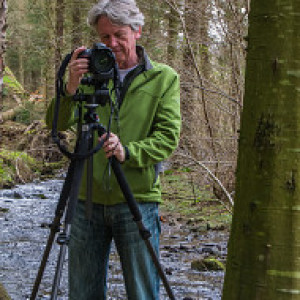Hallaig*
I had long wanted to return to Raasay. Driving from the ferry pier down to the end of the road at North Fearns, I passed the ruins of the iron ore mine established by Baird & Co just before WW1. German prisoners of war, stationed on the island, were enlisted to work there, but the mine closed after only a decade, when the government bought the island, starting another chapter in Raasay's tortuous history.
The last of the MacLeods, who had owned Raasay for centuries, finally surrenderd to his debts and emigrated to Tasmania in 1843, selling the island to George Rainy. After repeated failure of the potato harvest, Rainy decided sheep were the future, requiring that the people were removed - cleared - from the land. He was not alone in this; notable exponents of the Clearances being the Sutherland family in the far north. Rainy had little more success with sheep than he had experienced with potatoes. Ironically, the market for Scottish wool and lamb was eroded by cheaper, better product from Australia and New Zealand, where many cleared Scots had settled.
Rainy did not own Raasay for long, selling it on to an Edward Wood, who tried it as a sporting estate. That too achieved little, and the abovementioned Bairds acquired it in 1912. In 1922, the Government bought the island, and the arrival of the Forestry Commission in 1949 created much needed employment.
I walked in glorious sunshine round the coast to Hallaig, the cleared crofting community immortalised by Sorley MacLean, born in Osgaig on the Island's west coast. A monument to him stands by the path to Hallaig, in a location with a tremendous view across the bay to the ruined township. In this picture, Hallaig sits in and around the little patch of green under the flat-topped peak of Dun Caan. I indulged myself by reading aloud his poem "Hallaig" with only the trees and the waves as an audience.
"If it does not, I will go down to Hallaig,
to the Sabbath of the dead,
where the people are frequenting,
every single generation gone.
They are still in Hallaig,
MacLeans and MacLeods,
all who were there in the time of Mac Gille Chaluim:
the dead have been seen alive.
The men lying on the green
at the end of every house that was,
the girls a wood of birches,
straight their backs, bent their heads."
From Hallaig by Sorley MacLean, reproduced from the website of the
Sorley MacLean Trust.
The lonely ruins of Hallaig stand as a testimony to a history and culture almost totally eliminated by the sheer cruelty of the Highland landowner, treating their people as nothing more than assets that no longer had any value and had to be disposed of. Wandering among the ruins, perched on steep slopes overlooking the Inner Sound, it was impossible not to be moved by the hideous injustice of what happened here and right across the Highlands. I indulged my sense of injustice by cursing the sheep that grazed among the stones, oblivious to the irony of their existence. They seemed unmoved by my rantings.
*This entry previously appeared logged incorrectly against October 17th

Comments
Sign in or get an account to comment.


